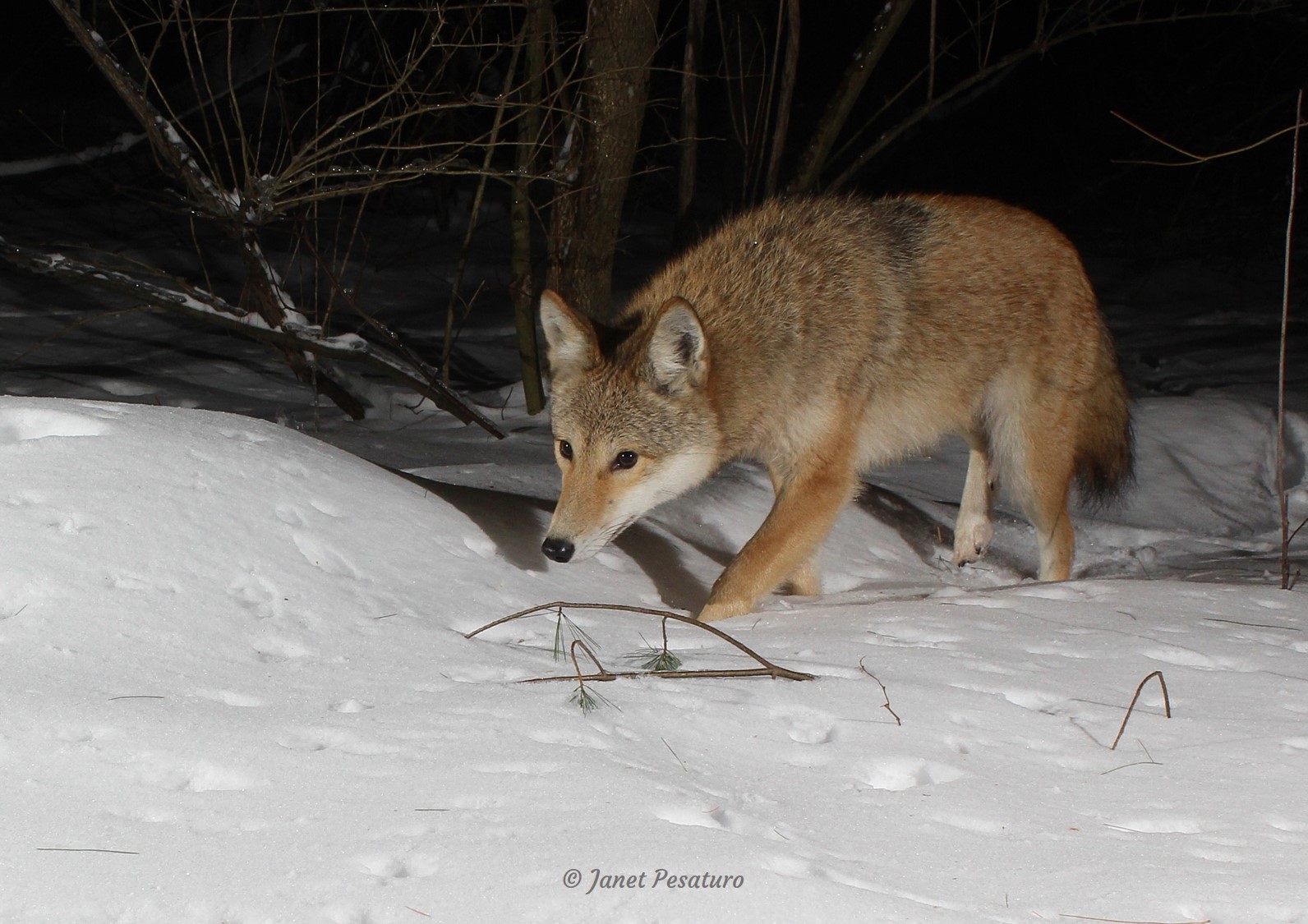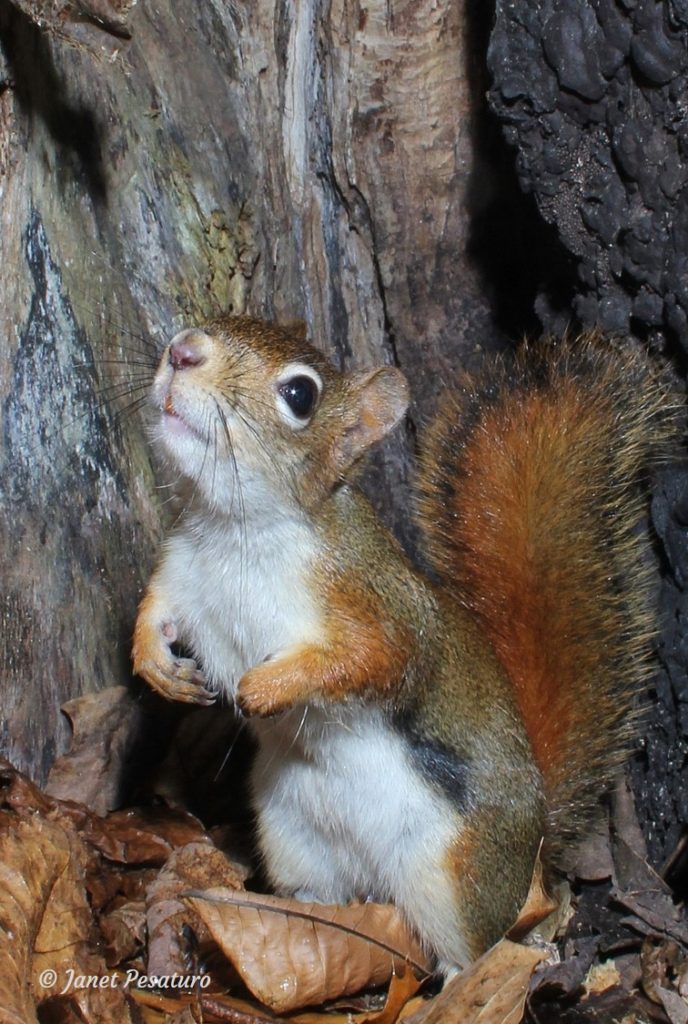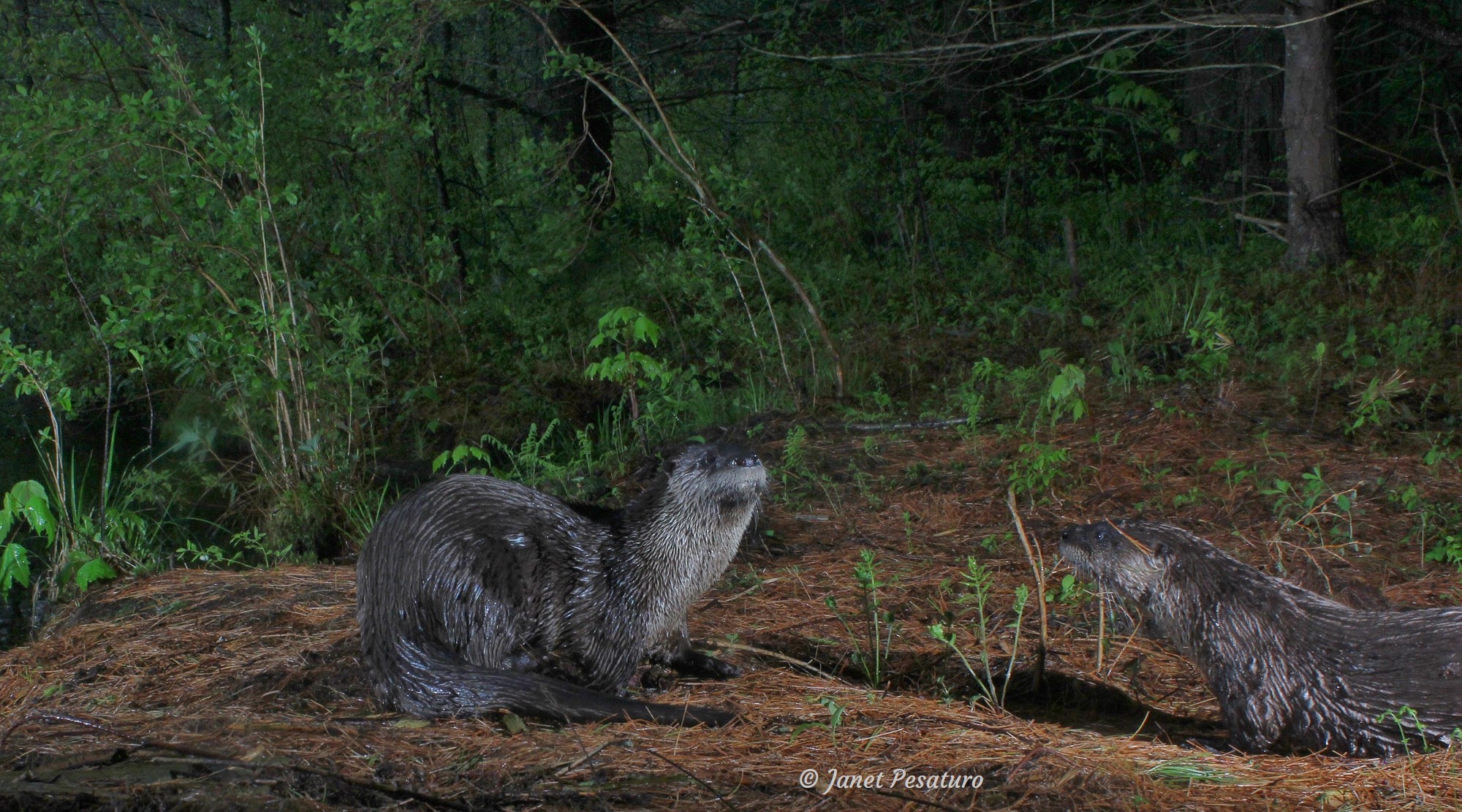
Updated February 27, 2024
Inquire about arranging in-person programs here.
Presentations Available
You may choose from the three talks described below, any of which can be adapted for groups with different interests and experience levels. Or, if you have an idea that’s a little different but you think falls within our expertise, feel free to ask. Contact us here to discuss your needs, to schedule a talk, or to inquire about cost.
Using Trail Cameras to Learn About Wildlife
Description: This engaging presentation covers the basics and then some. It introduces trail cameras – how they work, how to choose one, how to load them up and set them up, and common pitfalls. We then focus on smart camera placement, so that attendees can learn to use their own cameras to capture photos and videos that reveal the secret lives of wild animals. We discuss how to find general “hot spots”, and introduce the concept of targeting specific animals and behaviors. Many trail camera photos and videos are shown as examples.
Who it’s for: Geared to the curious wildlife lover, this introductory talk is excellent for anyone interested in getting started with trail cameras, as well as those with some experience. It provides the basics for beginners and inspiration for experienced trail cam enthusiasts to step up their game. Janet has given this well received presentation many times for community groups, nature clubs, Audubon groups, land trusts, etc.
Beyond the Backyard: Using Trail Cameras to Study Wildlife Behavior

Description: Camera traps are often used to see what animals visit the backyard compost, how many animals use a certain trail, who’s sneaking around the chicken coop at night, etc. But they can also be used in a more targeted fashion to capture certain species or behaviors, or to answer questions about wildlife habits. This talk focuses on targeted use, for those who want to move beyond the backyard. Strategies for capturing several different species using awareness of habitat preferences, wildlife tracking skills, and knowledge of animal behavior are covered. Trail camera footage is used to show many examples. Attendees can then apply the concepts they learn to their own creative camera trapping adventures. This program is meant to empower and inspire: Anyone with curiosity, persistence, and an inexpensive trail camera can study cutting edge animal behavior topics.
Who it’s for: This is for people who already know how to set up a trail camera and want to learn to use it to capture certain species or to learn about animal behavior. First presented at a professional development workshop to help teachers guide middle and high school students in developing and implementing trail camera projects, this talk can be adapted to different audiences.
Understanding Animal Communication: Scent Marking
Description: Animals communicate through a variety of modes, including olfactory, visual, and auditory. We can study some of this by examining and interpreting the sign they leave behind, and by capturing their behavior with trail cameras. In this workshop, we will explore how animals communicate using photos of sign created by a variety of mammals, and correlate that to trail camera photos and videos of them engaged in these behaviors. Seeing is believing!
Who it’s for: This talk is appropriate for nature enthusiasts familiar with wildlife tracking and animal behavior. The focus is not on how to use trail cameras. Rather, camera trap footage is used to inform us about wildlife behavior. First presented at the Northeast Wildlife Trackers Conference, this talk can be adapted to other audiences.

